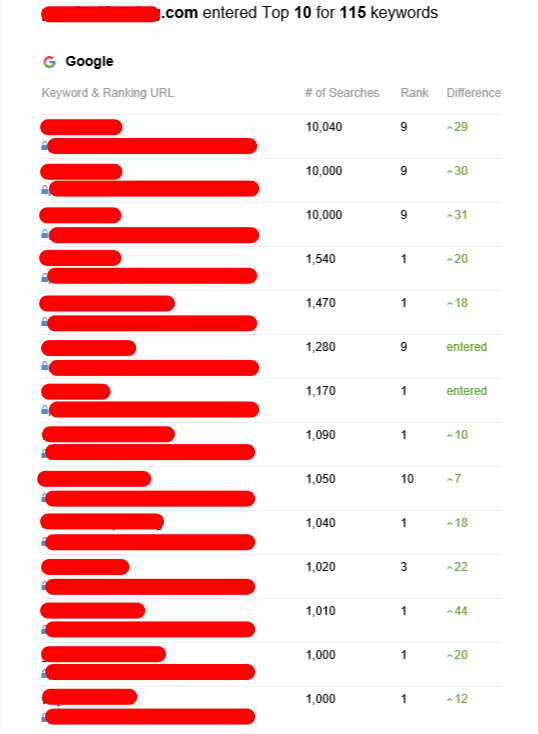Tier 2 Backlink Tips That Can Change Your Life

Backlink Tier - The Hierarchy of Backlinks That Scale Your SEO Campaign
Backlink tier refers to the hierarchy of links you build to boost your SEO campaign. Each level adds an additional layer of protection against Google hounding you with penalties.
Tiered link building requires a lot of time and effort to get it right. This is because Google takes weeks to discover new backlinks and evaluate their quality on the basis of each link.
First-Tier Links
The first layer of links that lead to your particular piece of content must be high-quality dofollow backlinks from trusted websites. These are referred to as Tier 1 backlinks, and they form the basis of your link-building strategy. They are a sign of trust for your web page, and give it enough domain authority to be highly ranked on search engine results pages. For instance, if your blog article was published on HubSpot and contained a tier-one link to SearchEngineLand's compilation of Link Building Statistics then SearchEngineLand’s web page rankings will benefit from the link equity that HubSpot transferred to SearchEngineLand.
The second tier of backlinks may be a little more diverse and may include low-quality links, such as spammy forum posts, or low-value bookmark websites and directories. The main objective of Tier 2 is to create content of high-quality that links back to your first-tier backlinks. This is because good content will enhance the article in which it resides and won't be able to distinguish itself as something that was added for SEO purposes.
To build a successful tiered link building program, you'll need to invest in the creation of quality content and using tools like RankerX or GSA. However the time and money that goes into manually performing an effort to build a tiered link is worth it in terms of the higher rankings that result from having a well-organized backlink pyramid.
Second-Tier Links
Tiered link construction is designed to lead users through external websites before bringing them to your site. It is important to select second-tier sources of backlinks that are relevant to your site and your industry to ensure this happens. Unlike account profiles guest blog posts work well in this regard since they provide valuable information that users want to consume.
You should generally avoid using Links in tier 2 on forums or other sites of low quality. Use high-quality pages instead of articles from industry or guest posts. These links will look more natural and will have a greater impact on your rank in the search results. In addition they are more likely to be acknowledged by Google as having passed link equity, which can increase their ranking value in SERPs.
If you want to increase your SEO ranking, you should be aware that getting these high-quality links manually is difficult. It can take months to pitch guest blog posts to first-tier publishers, and even longer to wait for them to be published. It can also take weeks to see the results when it comes time to create new traffic and converts onsite.
Many SEOs employ automated tools to create second-tier backlinks. However, this method can be in violation of Google's Webmaster guidelines and can result in a penalty.

Third-tier Links
The number of links on this level is staggering and could be considered to be spammy. They are posted on social media platforms, as well as user-generated content websites like Quora. They help with the indexing of tier two links, but don't pass any link equity to the promoted resource. Typically, they are nofollow links. At this stage marketers are more concerned with quantity rather than quality. They employ tools to publish many links in forums, in comment sections of articles, blog posts, in directories, and in other similar locations. In this instance tiered link-building is a gray zone that is in violation of Google’s webmaster guidelines.
Tiered link-building strategies require an immense amount of time and effort to be successful. Google could take months or even days to index an backlink. It may then take weeks or even months to see an SEO effect. Marketers should be patient, and use a carefully-planned content strategy.
Marketers should be cautious about using excessively automated tools for this type of linking. These tools could be in violation of the rules of search engine optimization and could result in penalties. It is better to manually select and post links on relevant donor websites instead of using automated services such as GSA or RankerX. This will prevent search engines from penalizing your marketing for links that are not of high quality.
Fourth-Tier Links
Tiered link building remains an effective method of improving ranking of websites. However since Google has made major efforts to eliminate "black hat" SEO practices, tiered linking techniques have been slashed.
This is because they are classified as gray-hat in SEO world, and can be penalized if used improperly. Tiered links are backlinks built on different tiers of the link pyramid. These backlinks are utilized to increase a website's ranking in search engine results. what is tier 2 link building? that is promoted will be more prominent than its competitors and will get more organic traffic.
This is a lower-quality tier of backlinks and is usually nofollow. This category may also contain low-quality directories, article networks and social media profiles. These links can be created by hand or through strategic automation solutions, but they must be varied in terms of domains or niches they are in and the relevance.
In addition to their low-quality, nofollow character, these backlinks could also cause problems if they're not diversified enough. This is because Google has a very advanced group of hound dogs who are always looking for patterns in backlink profiles and techniques. If these patterns are discovered they could trigger an infringement not only for the team responsible for building links, but also for its clients.
